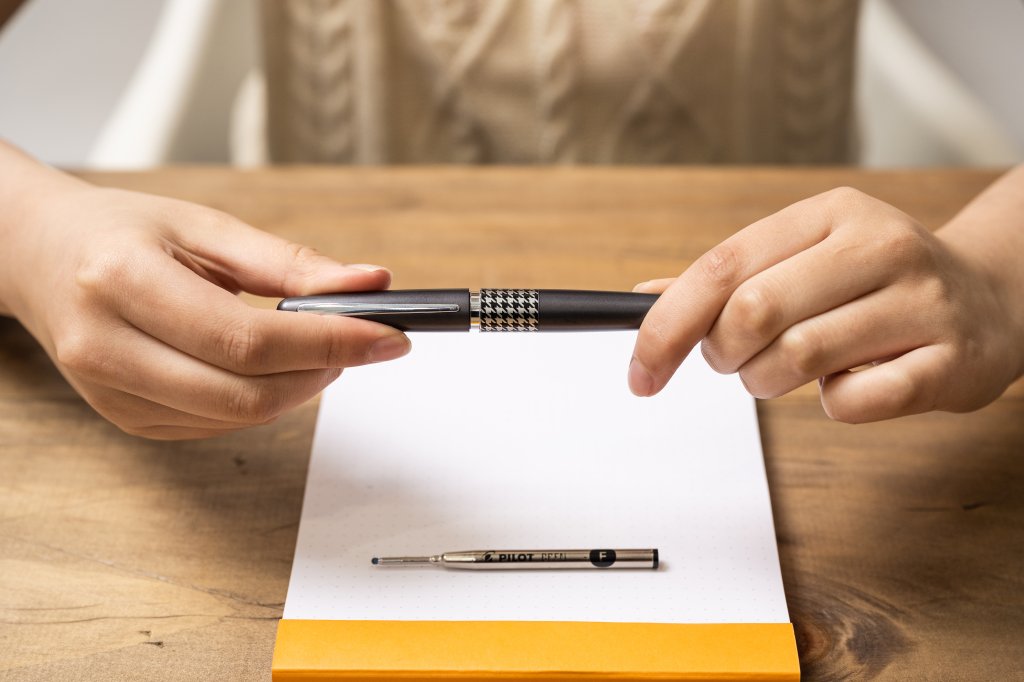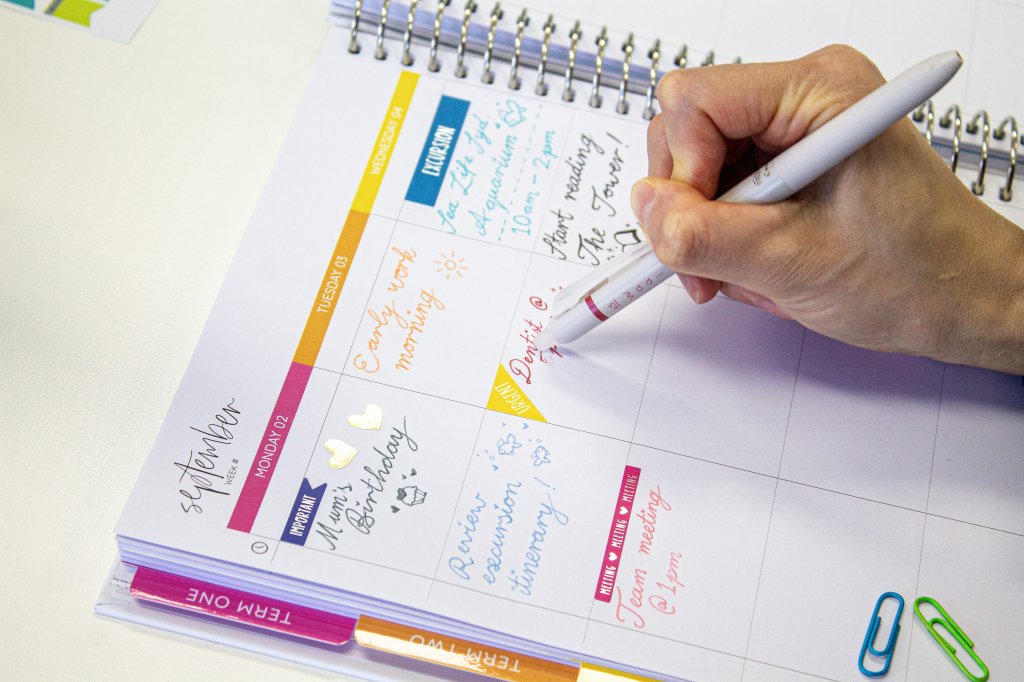There are more studies on handwriting vs typing every so often, and all evidence is starting to draw a clear line - that pen and paper is better than typing. This simple switch can help boost recall, increase focus, and overall offer more effective study. However, this doesn’t mean we must entirely dismiss the laptop - it still has its place. In this article, we explore the science behind writing by hand, we look at how to adapt a hybrid approach, and how to get started to claim the benefits of handwriting.
Key Takeaways
Writing by hand is far more effective for recall and study than typing, and helps improve focus.
Typing is faster and can still be a useful tool in certain situations, such as during dense, fast-paced classes.
High-quality erasable pens can help keep your notes neat and easy to digest, offering more effective study when the time comes.
Getting into the habit of writing by hand is all about starting small. Replace just one part of your routine with handwriting and expand from there.
Why is Handwriting Better than Typing?
Does writing help you remember? Multiple studies have given us some insight into this question, and we’re well-placed to answer it comprehensively today.
When you opt for writing by hand over typing, you engage multiple areas of your brain at once, namely movement, vision, and memory, which helps to create stronger neural connections than typing. In a nutshell, your brain is processing information at a deeper level.
One theory was that laptops introduced too much distraction, and hence, the “focus mode” was born. But even in focus mode, a popular study found that notes by hand were still more effective than notes on a laptop. This is mainly because we type faster than we write, and so we essentially dump the notes verbatim on our laptop. When writing by hand, we’re forced to think about what we hear and summarise, or risk falling behind.
And more recent neuroscience supports this, too. An NTNU study used EEG recordings to show that handwriting activates wider and more complex brain networks involved in learning and memory compared to typing. This suggests that writing by hand builds richer “memory traces” that stick for longer.
Together, these and many other findings make a clear case: handwriting doesn’t just help you remember more right now, it strengthens the mental pathways you’ll rely on later in exams.
The benefits don’t stop at boosted recall, however.
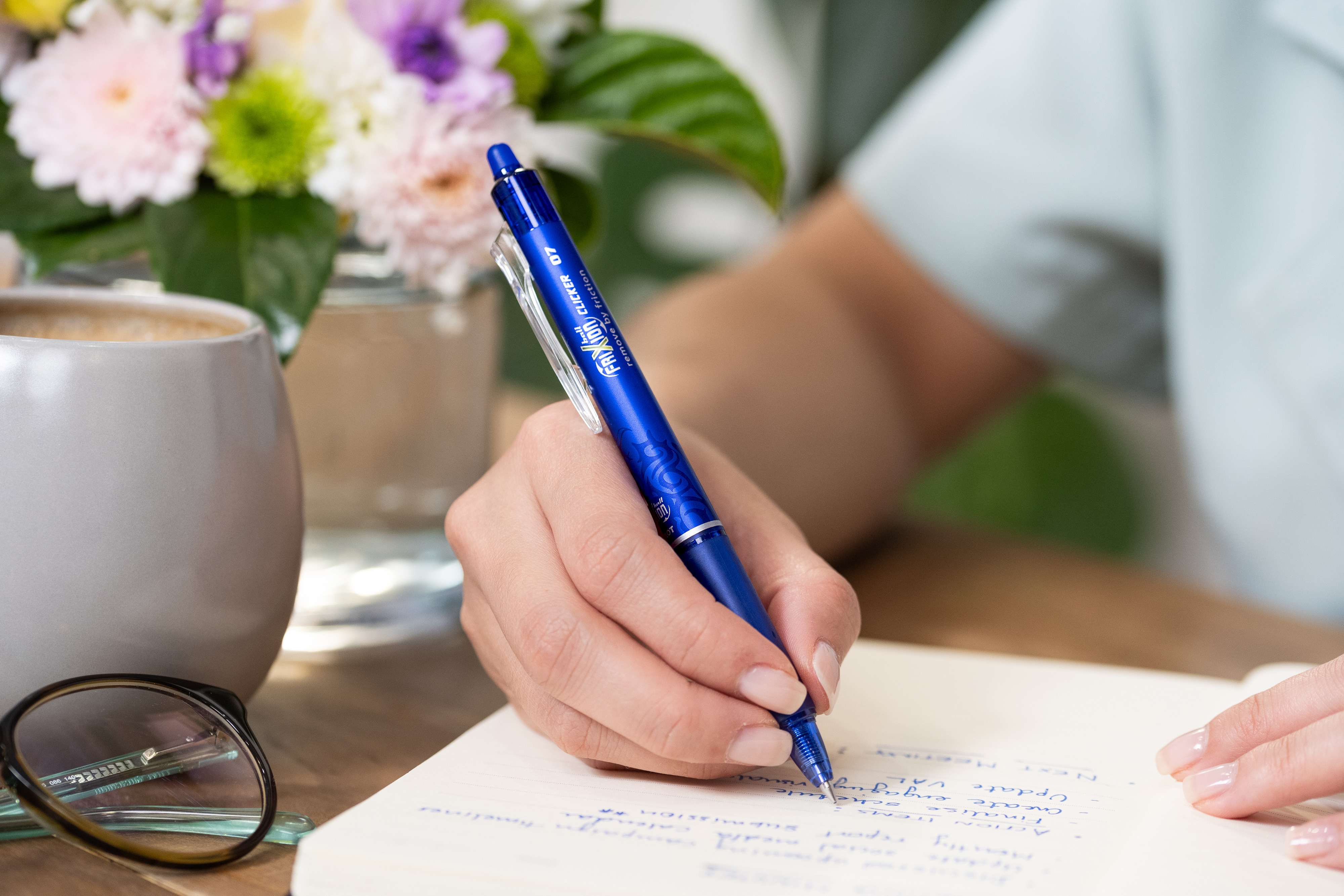
Productivity & Focus: More than Just Memory
Writing can also transform the way you organise and tackle your daily tasks. Putting pen to paper slows your pace just enough to give you clarity. You’re no longer juggling tabs or glancing at notifications; instead, you’re creating a dedicated space to think about what actually matters.
Paper lists, planners, or handwritten schedules also make your priorities visible at a glance. This visual overview can reduce mental clutter and help you plan your time more realistically. Many students and professionals find that handwriting tasks encourage them to sort, rank, and focus, rather than dumping everything into a single digital list.
There’s also a motivational boost. Physically crossing an item off a list feels different from clicking a checkbox. It’s a small but satisfying action that can build momentum through your day.
Pen and paper can make your workflow calmer and more intentional, whatever your goal. Small, deliberate steps like this can help you feel more in control of your tasks and less overwhelmed.
Writing vs Typing: What’s the Real Difference?
Just because writing by hand can help you remember things, that doesn’t mean we should entirely abandon typing. Both methods have their advantages and disadvantages, and a combination of both can help you supercharge your studies.
So, is it better to write or type notes? Here’s a handy table looking at the benefits of both.
| Category | Handwriting | Typing |
|---|---|---|
| Speed | Slower. Encourages summarising and deeper thinking. | Faster. Ideal for capturing a lot of information quickly and comprehensively. |
| Comprehension | Forces you to rephrase, process, and select key ideas. | Risk of verbatim transcription with shallower processing. |
| Distraction | Minimal. No tabs, notifications, or multitasking. | Higher. Apps and alerts can disrupt focus. |
| Editing & Searchability | Harder to edit, but easier to add diagrams and symbols. | Easy to edit, search, and back up digitally. |
| Best Use Cases | Initial learning, summarising lectures, revision notes, and brainstorming. | Drafting essays, collaborative projects, and storing large amounts of text. |
While handwriting is better for recall, you may not be able to keep up in rapid classes. In cases like these, you may want to opt for a hybrid approach, in which you take initial notes on the laptop, but then later on transfer the notes to paper at your leisure.
This can seem like double work, but it can save time later down the road when studying the material. It can be a bit of a balancing act, but by being mindful about the situation, you can amplify your learning experience.
How to Maximise Handwriting for Study & Revision
Aside from the abovementioned hybrid method, there are a few ways to ensure you take effective, helpful notes.
Summarise, don’t copy: Use bullet points, mind maps, and margin notes to capture only what matters.
Make it legible: Slow down slightly to make your writing clear. Use ruled paper or templates if needed.
Colour-code your notes: Assign colours for definitions, examples, formulas, or exam tips. FriXion Fineliners make this easy to adjust without smudging.
Highlight strategically: Mark key points or trouble areas with FriXion Highlighters to revisit before tests.
Use erasable pens: FriXion Ball, Clicker, or Waai pens let you correct mistakes cleanly, making rewriting or revising less intimidating.
Structure revision: Revisit notes with spaced repetition, rewrite summaries in your own words, test yourself, and use handwritten flashcards.
Stay organised: Divide notebooks by subject, add clear date/topic headings, and integrate your handwritten notes with your study schedule for consistency.
These steps turn your notes into an active study tool instead of a passive record.
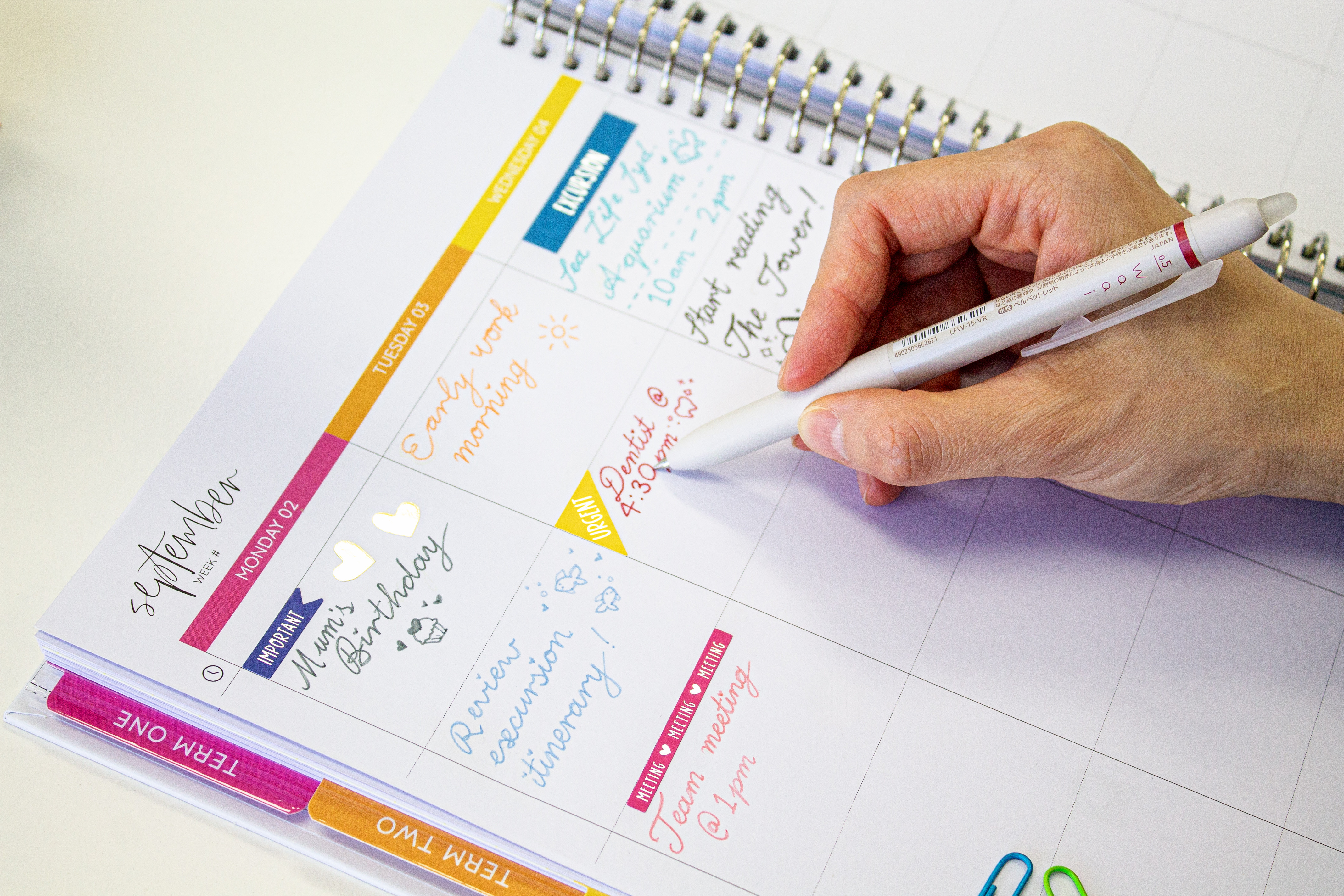
Tools That Make Handwriting Easier
Handwriting doesn’t have to feel old-fashioned or inconvenient. The right pen for note-taking and journaling can make a massive difference, and not much beats a great writing experience. FriXion pens are designed for students who want the benefits of handwritten notes without the frustration of mistakes or messy pages.
FriXion Ball – The classic erasable pen, perfect for everyday notes and lists.
FriXion Clicker – A retractable version for on-the-go writing; no caps to lose.
FriXion Waai – A fun, lighter option ideal for quick notes or colour-coding.
FriXion Fineliners – Precise tips for neat, detailed writing and colour-coded notes.
All refillable FriXion pens use thermo-sensitive ink that can be erased cleanly, making rewriting or revising less intimidating. They’re ideal if you want tidy notes, clear organisation, and flexibility when revising.
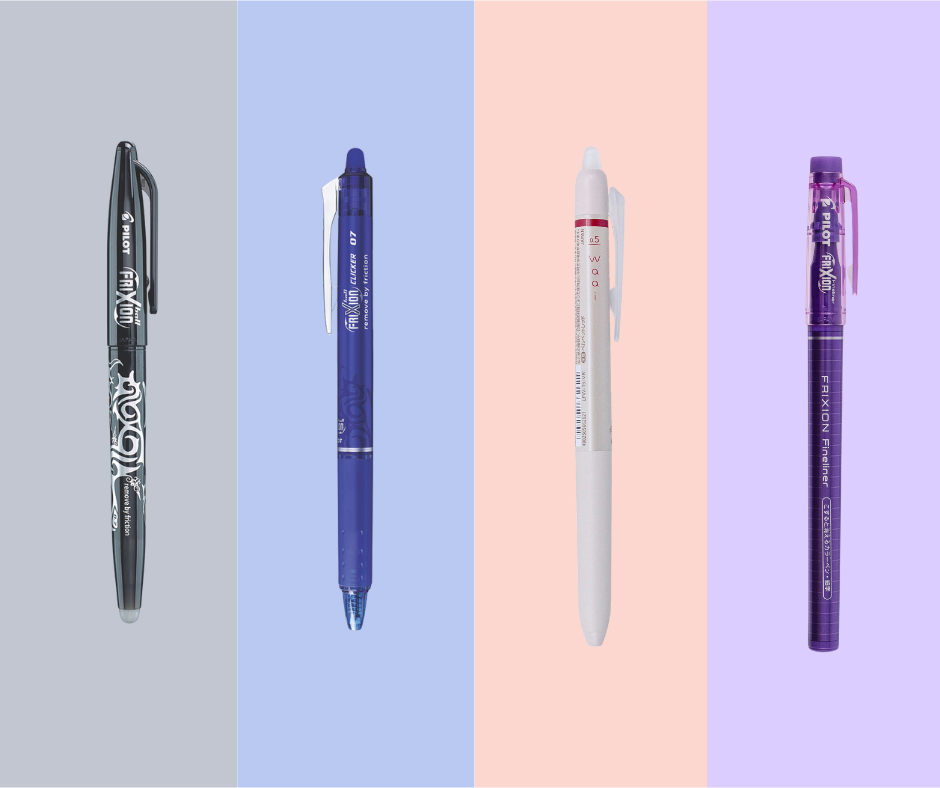
Practical Tips for Integrating Handwriting Into Your Routine
Handwriting doesn’t have to mean throwing away your laptop. On the contrary, blending handwritten notes into your existing study or work habits can help you reap the benefits of deeper processing and focus without disrupting your workflow. These practical strategies can make it easy to start:
Start Small and Build Gradually
Begin by switching just one aspect of your day over to handwriting. For example, your to-do list, a quick lecture summary, or even mindful writing or a gratitude journal. This lowers the barrier to entry and lets you feel the difference in focus and retention before expanding the habit.
Use a Dedicated Notebook for Summaries
Keep a single notebook just for handwritten summaries or revision notes. Having everything in one place saves time and creates a go-to resource for exams or meetings. To keep it organized, consider using sticky notes or booktabs to develop a simple, effective index.
Pair Handwriting with Digital Tools
Take photos of your handwritten notes or scan them into apps like OneNote or Notion. This way, you keep the cognitive benefits of handwriting while still enjoying the convenience of cloud storage and searchability.
Another idea is to re-create them on your laptop as an easy, printable study guide.
Schedule Short Handwriting Sessions
Block out 10 to 15 minutes at the end of each study session to rewrite key ideas by hand. Regular, deliberate practice enhances your recall and helps you identify areas where you need improvement in your understanding.
Experiment with Colour Coding
Use different FriXion colours to highlight definitions, examples, or formulas. Visual cues make complex information easier to scan and remember during revision.
You Can Study Effectively
For HSC exams (or any major test), comprehension and focus matter as much as the sheer quantity of notes. Handwriting is a powerful, low-tech tool that can boost both.
You don’t have to go all-in. Start small. Pick up a PILOT FriXion pen, and try handwriting your next study session, then expand from there and turn it into a regular habit so you can reap the cognitive benefits of handwriting every day.
Putting pen to paper isn’t old-fashioned; it’s strategic. You’ve got this.
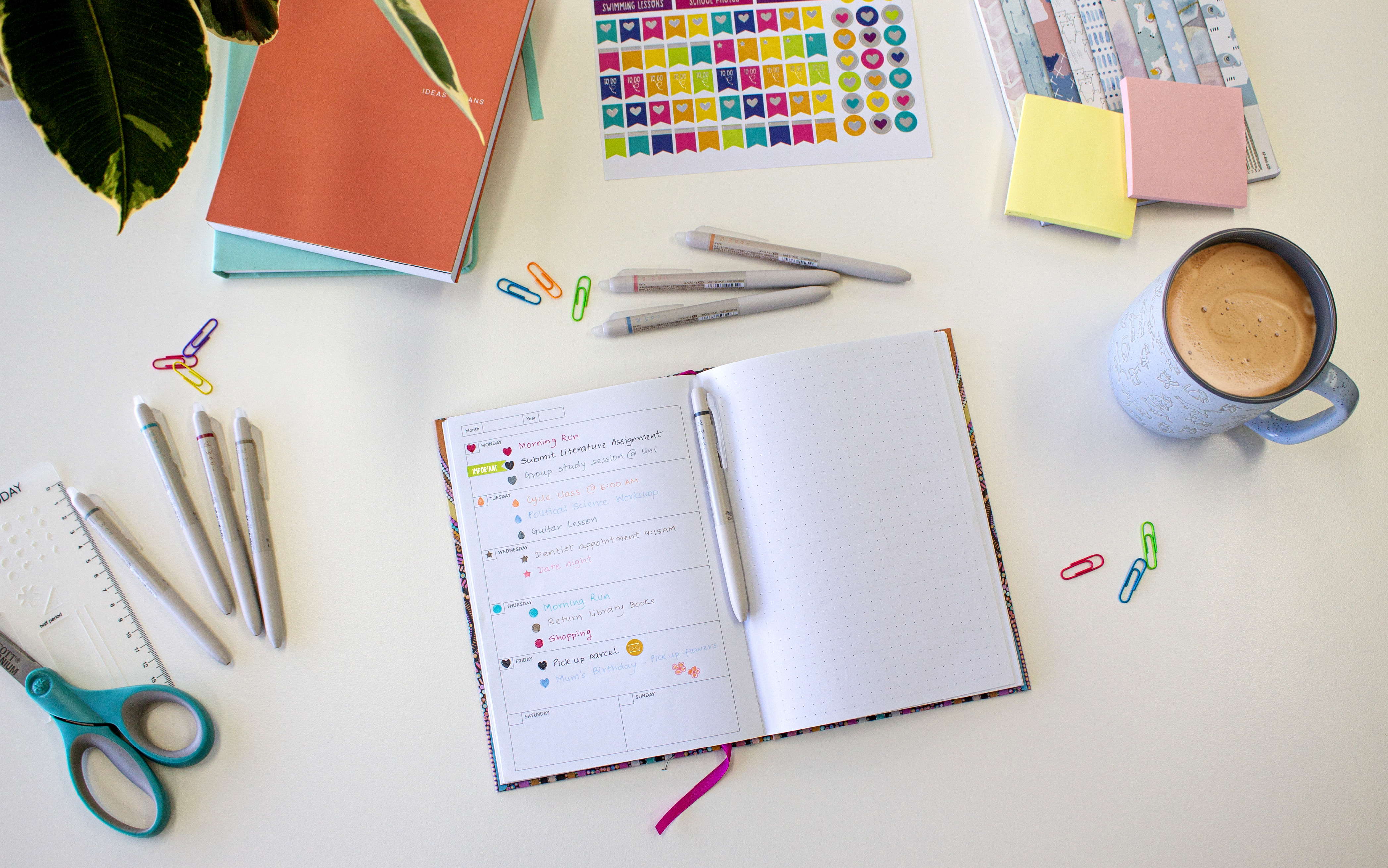
About Author
Stephanie Janolo
At Pilot Pen Australia, she bridges the gap between digital and timeless writing instruments. Beyond the realm of pixels and algorithms, her inspiration strikes in the form of art, museums and lyrical narratives of Taylor Swift.




